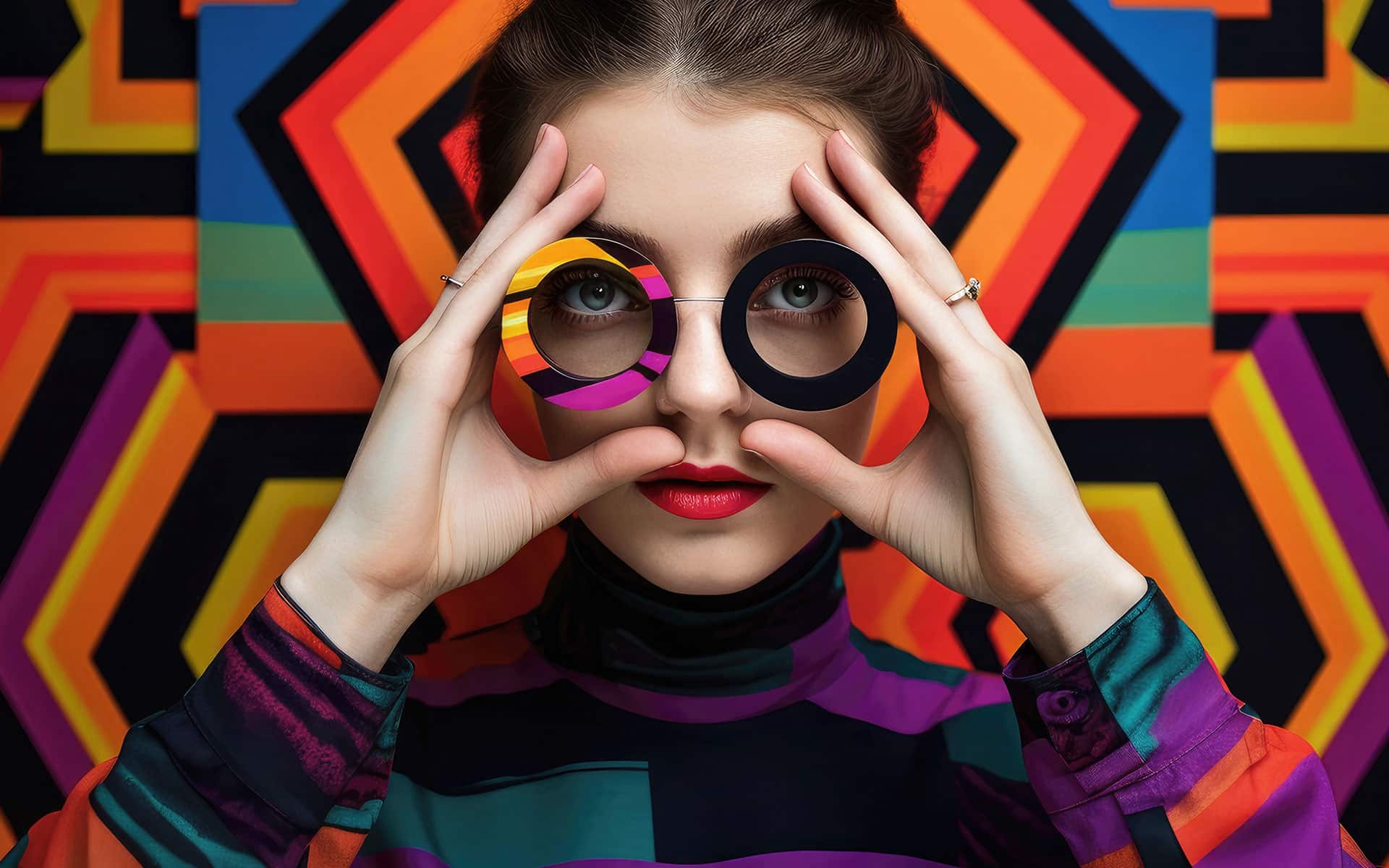04 JAN 2024. Advances in artificial intelligence have made it possible to create highly realistic and detailed AI-generated images using algorithms such as Generative Adversarial Networks (GANs) or Variational Autoencoders (VAEs)
These algorithms learn from extensive datasets of images to produce new visuals that mimic the training data, leading to extensive discussions about the impact of AI-generated images on photography and its future.
Today, online platforms offer many text-to-image generation tools, revolutionizing how we create visual content. These tools allow users to input descriptive text prompts and receive stunning images generated by artificial intelligence. This technology has become increasingly popular among designers, artists, and marketers aiming to enhance their creative processes. Here are some of the most popular tools available for generating AI images:
DALL·E 3: The future of AI image generation
DALL·E 3 is a cutting-edge image generation tool that stands out for its user-friendly interface and seamless integration with ChatGPT and Microsoft Bing’s AI Copilot. This powerful combination allows users to create stunning images with ease, breaking down barriers to access for both novices and seasoned creators. The process of generating images with DALL·E 3 is straightforward. Users can submit detailed prompts, and the tool responds by producing engaging realistic images. Each account is granted two images per day free of charge, making it accessible for those who want to experiment without commitment. There’s also an option for unlimited access through the ChatGPT Plus subscription, enhancing the user experience for avid creators. DALL·E 3 excels at understanding prompts, resulting in remarkable, consistent imagery that closely aligns with user expectations. This capability makes it an invaluable resource for diverse applications, from marketing to personal projects. Whether you need visuals for a blog, social media campaign, or other creative endeavors, DALL·E 3 provides a robust solution. In summary, its combination of ease of use and powerful output makes DALL·E 3 a standout choice in the realm of AI-generated images.
Midjourney: Your gateway to stunning visuals
Midjourney is an innovative platform specializing in generating high-quality images that are both visually appealing and lifelike. Operating primarily through Discord, it allows users to create and share stunning visuals with ease. Recently, Midjourney has broadened its accessibility by introducing a user-friendly web app, making it easier than ever for users to harness its capabilities. By subscribing to Midjourney, users gain access to a wealth of features designed to enhance their creative projects. Each subscription grants approximately 200 images per month, ensuring that individuals and businesses have a steady stream of resources at their disposal. Additionally, subscribers enjoy commercial usage rights, empowering them to utilize the generated images in professional settings without any legal concerns. In a world where visual content is paramount, Midjourney stands out for its commitment to quality and user satisfaction. The platform consistently produces images that not only meet but often exceed user expectations. Whether you are a graphic designer, marketer, or simply someone looking to create stunning artwork, Midjourney offers unmatched tools to bring your vision to life. With flexible access options via both Discord and the new web application, Midjourney is paving the way for a seamless creative process.
Ideogram: Enhancing your creative process
Ideogram is an innovative tool designed specifically for rendering text accurately within generated images. This platform stands out for its precision and versatility, making it a valuable resource for designers, marketers, and content creators alike. Whether you’re working on social media graphics, presentations, or promotional materials, having a tool that can produce sharp and clear text in images is essential. Ideogram offers a limited free plan that allows users to experience its capabilities firsthand without any financial commitment. This is ideal for those who want to test the waters before subscribing to a paid plan. For those requiring full-resolution downloads and additional credits, paid options are available. These options ensure that users can scale their projects as needed, catering to both casual creators and professionals. Choosing Ideogram enhances your creative workflow by providing an intuitive interface that simplifies the process of adding textual elements to images. The accuracy of the rendered text means less time spent on editing or correcting errors, allowing you to focus more on the creative aspect of your work. For projects that demand high-quality visuals combined with precise textual content, Ideogram is certainly a tool worth exploring.
Stable Diffusion: An open-source image generation tool
Stable Diffusion is an innovative open-source model that revolutionizes image generation. Unlike traditional models, Stable Diffusion offers extensive customization and control over the output, allowing users to tailor their creations to their specific needs. This flexibility is a significant advantage for artists, designers, and developers alike, as it encourages creativity and innovation in visual content creation. Setting up Stable Diffusion locally may require a certain level of technical knowledge, which might be a barrier for some users. However, numerous platforms provide access to this powerful tool through user-friendly interfaces. Users can explore various pricing models, often benefiting from introductory offers such as free credits. These options make it easier for newcomers to start experimenting with image generation without requiring extensive technical setups. The ability to customize and control image generation is one of the most appealing aspects of Stable Diffusion. Users can manipulate parameters to achieve unique effects and styles, making every generated image distinct. This feature not only enhances creativity but also caters to the specific demands of different projects, whether for personal art or professional applications. As the community continues to grow, more resources and support become available, allowing users to fully harness the power of Stable Diffusion.
Flux.1: The next generation of Text-to-Image AI
In the rapidly evolving field of artificial intelligence, text-to-image generation has gained significant attention. One of the newer players is Flux.1, developed by a talented team of former members from Stability.ai. This innovative model is designed to offer powerful capabilities for generating images from textual descriptions, much like its predecessor, Stable Diffusion. While Flux.1 shares similarities with Stable Diffusion in its functionality, it aims to provide a more refined user experience. The creators of Flux.1 have been mindful of the controversies associated with Stable Diffusion, focusing on a more ethical approach to AI-generated content. This dedication to responsibility in AI development helps position Flux.1 as a worthy alternative, appealing not only to developers but also to artists and content creators seeking ethical solutions. As artificial intelligence continues to advance, models like Flux.1 showcase the potential for creativity and innovation in the text-to-image generation space. By offering a powerful tool without the baggage of previous models, Flux.1 encourages users to embrace AI in their artistic endeavors.
Adobe Firefly: The new era of digital imaging
Adobe Firefly is an innovative tool designed to enhance the creative process in digital imaging. It seamlessly integrates with Adobe’s suite of applications, most notably Photoshop, making it easier for users to generate stunning images directly from text prompts. The platform allows for a user-friendly way of transforming ideas into visuals, making it a valuable asset for designers, photographers, and artists alike. One of the standout features of Adobe Firefly is its ability to generate images based on text prompts. This functionality opens new avenues for creativity, allowing users to express their visions in words and see them come to life on screen. The process is intuitive, allowing for quick iterations and adjustments, ensuring that artists can achieve their desired look efficiently. Additionally, Firefly incorporates reference photos for style matching, enabling users to maintain consistency across their projects. Adobe Firefly operates on a credit system, offering a limited number of free credits each month. This allows users to experiment with the tools without immediate financial commitment. However, once the free credits are exhausted, users will need to subscribe or purchase additional credits. This model ensures that while initial exploration is accessible, serious users can engage with the full range of features Adobe Firefly has to offer.
Generative AI by Getty: For safe commercial images
In today’s visual-centric world, businesses require high-quality images to capture attention and convey messages effectively. Generative AI by Getty is an innovative tool that produces images suitable for commercial use. This cutting-edge technology empowers businesses by providing access to a library of commercially safe images that are both distinctive and relevant. The primary advantage of integrating this tool is the ability to generate custom images quickly. Traditional approaches to image sourcing can be labor-intensive and time-consuming, whereas generative AI delivers speed and efficiency. Businesses can save valuable time and resources by leveraging AI-driven image creation. This feature is particularly beneficial for marketing teams needing visual content for campaigns and social media. One of the notable features of generative AI by Getty is its commitment to producing commercially safe images. This emphasizes how the tool adheres to copyright and licensing regulations, ensuring that businesses can use the images without legal concerns. By focusing on compliance, Getty allows users to concentrate on their core activities without the risk of potential copyright infringements. As businesses increasingly rely on visuals to enhance their branding and engagement, utilizing generative AI by Getty is an effective strategy. The fusion of creativity and technology not only streamlines the image creation process but also guarantees compliance, making it an essential tool for modern businesses.
These tools cater to various needs, whether you require high-quality artistic outputs or specific functionalities like accurate text rendering or integration into existing workflows.

Screenshot from openai.com website, DALL-E 3.
AI-generated image types
- Deepfakes – These are images or videos that use AI algorithms to superimpose one person’s face onto another’s body. This type of AI-generated imagery has raised ethical concerns due to its use in creating fake news and pornography, for example when trolls flooded Twitter with fake images of Taylor Swift.
- Artistic images – AI algorithms can generate artistic images that mimic the style of famous artists or create new, unique styles. These images can be used for various purposes, such as generating cover art for books or creating visual effects for movies.
- Data augmentation – AI-generated images can be used to augment existing datasets, allowing machine learning models to be trained on more diverse and comprehensive data. This can lead to improved model accuracy and performance.
- Simulated environments – AI algorithms can generate realistic simulated environments for testing autonomous vehicles or other robotic systems. This allows for safe and cost-effective testing before deploying the systems in real-world environments.
Impact of AI on photography and visual media
AI-generated images enable new forms of creativity and expression, allowing artists to create unique styles and generate images that would be difficult or impossible to create manually. This can lead to more diverse and innovative visual media, pushing the boundaries of what is possible in photography and other visual arts. Automating the image generation process allows businesses to save time and resources while producing high-quality visual content.
AI-generated images can enhance efficiency and productivity in industries such as advertising, gaming, and film production
Ethical concerns and challenges arise with the rise of AI-generated images, particularly regarding their use in creating fake news, deepfakes, or other deceptive forms. This raises questions about the responsibility of developers and users to ensure that AI-generated images are used ethically and transparently. Additionally, copyright and ownership issues may arise when AI algorithms generate images resembling existing works or create new works based on existing data.

Screenshot from flux-ai.io website, FLUX.1.
Future of AI in photography and visual media
- Improved realism – As AI algorithms continue to improve, AI-generated images will become increasingly realistic, making it difficult to distinguish them from real photographs. This could lead to new applications in fields such as virtual reality or telepresence.
- Dynamic image generation – AI algorithms may be able to generate dynamic images that change based on user input or environmental factors. This could lead to more interactive visual experiences in gaming, advertising, or other applications.
- Integration with other technologies – AI-generated images may be integrated with other emerging technologies such as augmented reality (AR) or virtual reality (VR) to create more immersive experiences for users. This could lead to new applications in fields such as education, healthcare, or tourism.
- Continued ethical discussions – As the use of AI-generated images becomes more widespread, it is essential to continue discussions about the ethical implications and ensure that regulations are in place to prevent misuse or abuse of this technology.
Adobe Firefly: Out of beta & ready for your imagination.

















